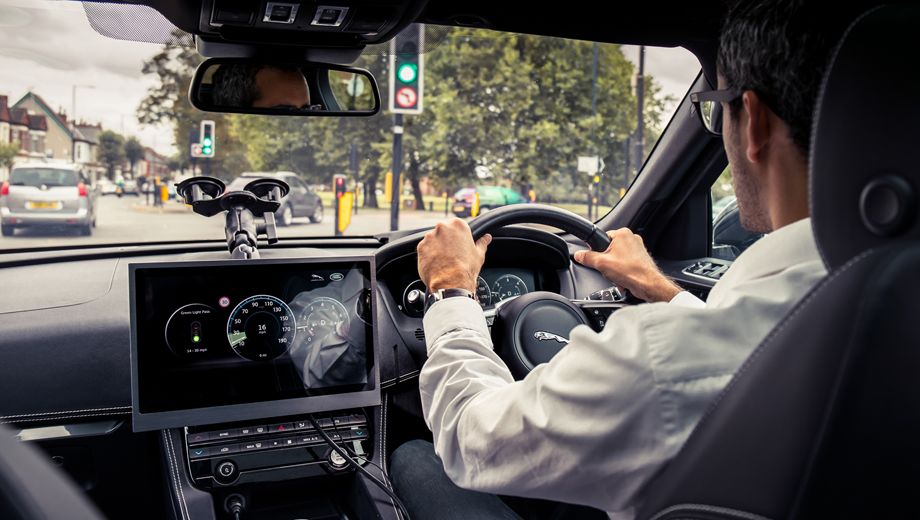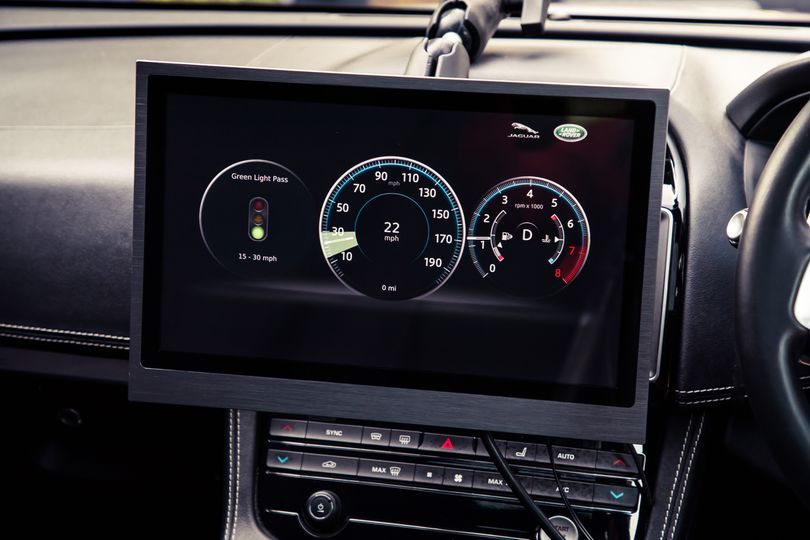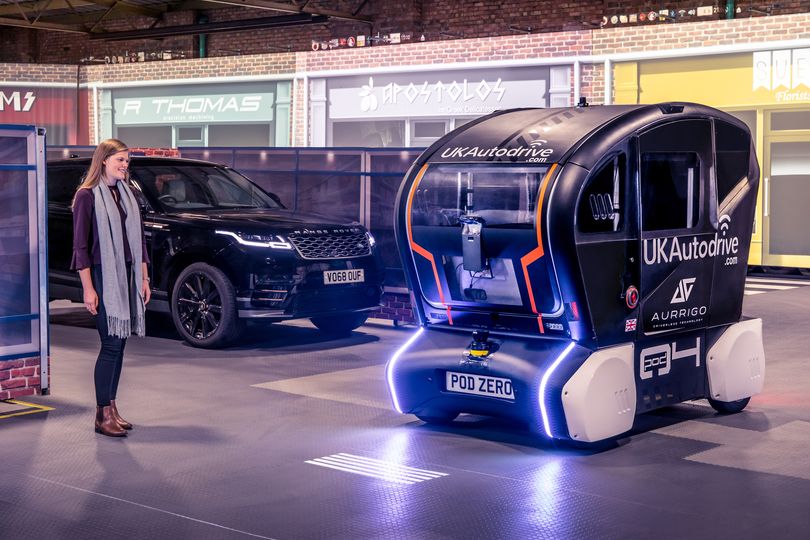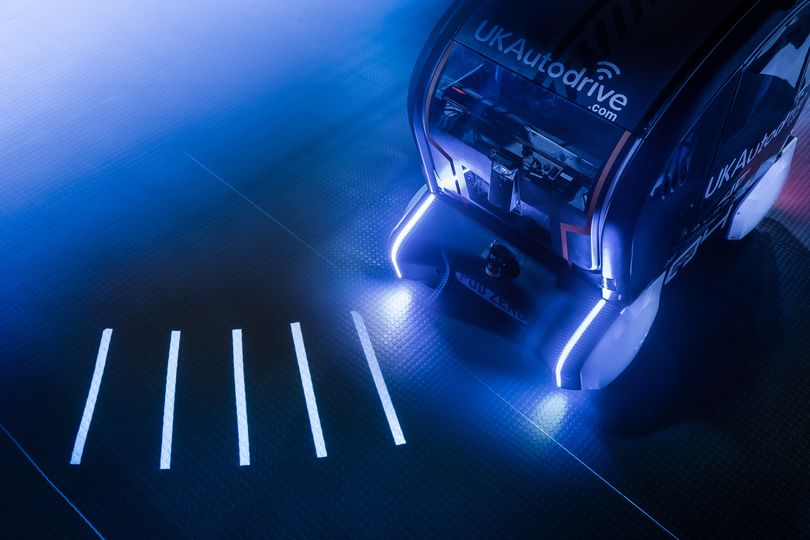Jaguar's 'connected car' could mean you'll never see a red light again

Silent, electric, self-driving cars are creating a new set of challenges for the world’s carmakers. But connected cars also promise to make life easier on the road.
Vehicles that talk to each other, and to roadside infrastructure, have been under development for more than 20 years and promise to provide an early warning system by sharing information about road conditions, weather, traffic jams and crashes.
Jaguar Land Rover is even developing a system that promises a life without red lights.
Just over 150 years since the installation of the world’s first traffic lights, outside the Houses of Parliament in London, JLR is pushing ahead with a Green Light Optimal Speed Advisory system that allows cars to “talk” to traffic lights and advise the driver of the ideal speed they should use to avoid a stoplight.
It uses V2X 'Vehicle-to-Infrastructure' technology with the aim of creating free-flowing cities with fewer delays and less commuter stress.
“Widespread adoption of the V2X technology will prevent drivers from racing to beat the lights and improve air quality by reducing harsh acceleration or braking near lights,” says JLR. But it’s not just about green lights.
An Intersection Collision Warning that tells drivers when it is unsafe to proceed at a junction, and can also decide which cars should have priority at a junction, while at the end of a trip, the V2X system can even find a vacant parking spot.
But JLR has plenty of other work underway, from a system that automatically opens the driver’s door as they approach a car to a pedestrian-friendly vehicle that literally shines a light on its future direction.
The light path is part of ’trust trial’ to integrate autonomous cars into everyday motoring.
Jaguar is already trialling sound systems that want pedestrians that an electric car is approaching, since - unlike combustion engines - there is almost zero noise. The autonomous lighting uses projector lamps that indicate where the car is going.
“The trials are about understanding how much information a self-driving vehicle should share with a pedestrian to gain their trust,” says Pete Bennett, Future Mobility Research Manager at JLR.
The projectors currently show the autonomous car's direction and turning pattern, but in future they could share obstacle detection and journey updates.
The system is being tested on autonomous people pods developed by a company called Aurrigo, using a series of lines or bars with adjustable spacing. The gaps shorten as the pod is preparing to brake before fully compressing at a stop, then extend as it accelerators, fanning left or right to indicate a turn.
“Just like any new technology, humans have to learn to trust it. When it comes to autonomous vehicles, pedestrians must have confidence they can cross the road safely,” says Bennett.
“This pioneering research is forming the basis of ongoing development into how self-driving cars will interact with people in the future.”




CX
05 Jun 2012
Total posts 127
I was amused by the reference to the world's first traffic light. Supposed to improve safety, it promptly exploded, killing a nearby policeman. How technology has advanced since then!
Virgin Australia - Velocity Rewards
18 May 2016
Total posts 7
This sounds great from a user perspective, but it only really works well when the timing of the traffic lights is known well in advance. Unfortunately, the current demands on the road network that our traffic signals have to manage is becoming MORE unpredictable. We are now having to provide priority green signals for emergency vehicles, public transport and other services. This, and the need to be able to adapt the operation of the signals more dynamically from one cycle to the next to service the demands means that the timing of the signals in cities with more advanced traffic management is going to become less predictable. This will make this feature in the vehicles less able to be trusted as the timing is going to change so often.
23 Mar 2015
Total posts 5
With a maximum initial green of 40 seconds (NSW), cars need to be able to interrogate traffic lights at least 600m ahead in built-up areas to avoid a total stop. (Further if there are multiple phases like right turn filters or higher speeds involved.)
12 Aug 2017
Total posts 75
We could alternatively look at a low tech option that all cars old and new can use: replace many traffic lights with roundabouts. This allows for better flow at minor intersections and is the norm in the UK. Collisions at roundabouts result in fewer injuries because they are always slower and are oblique. This compares to head-on direct hits at traffic lights.
Hi Guest, join in the discussion on Jaguar's 'connected car' could mean you'll never see a red light again